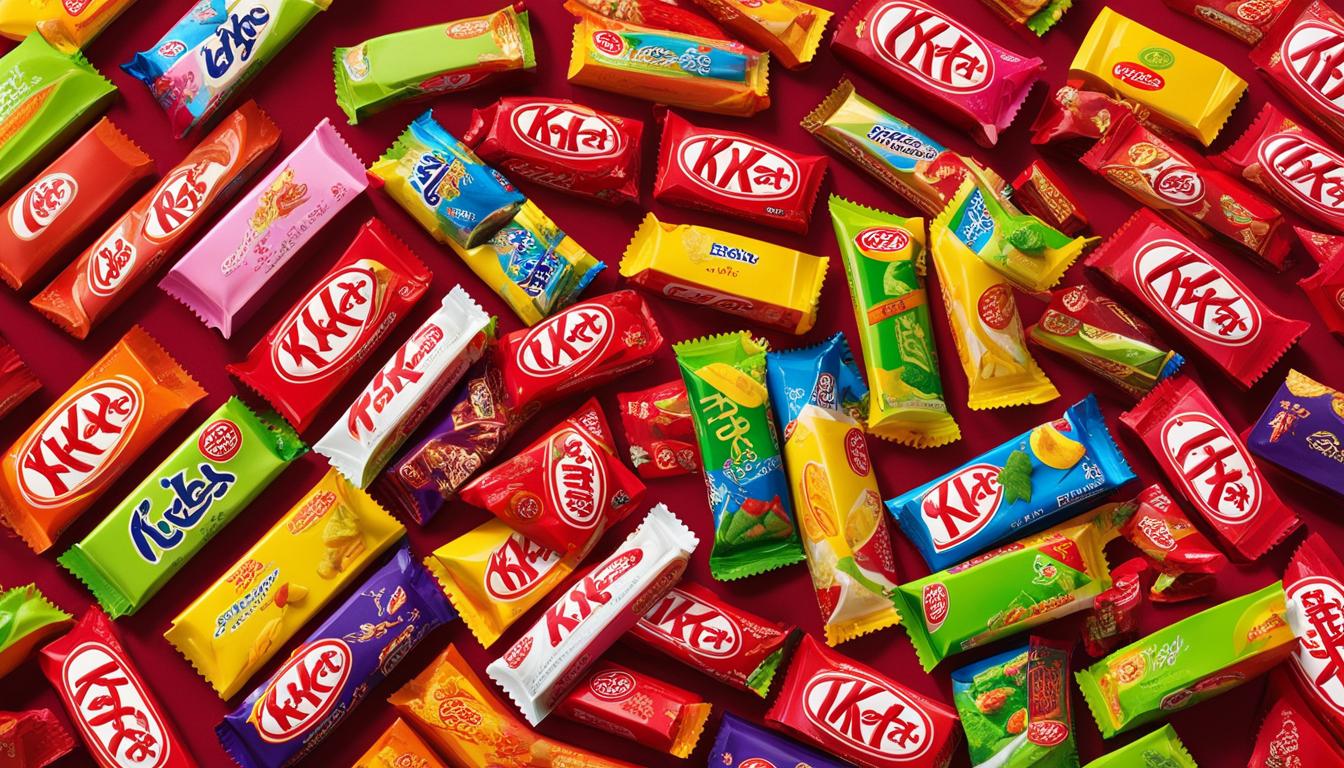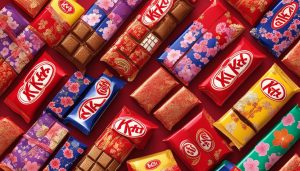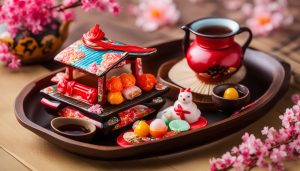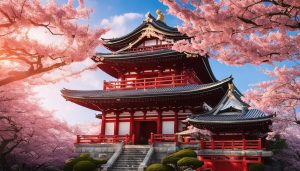In Japan, Kit Kats are not just a delicious chocolate snack; they are also considered a symbol of good luck, particularly for students studying for exams. The word “Kit Kat” sounds similar to the Japanese phrase “kitto katsu,” which translates to “you will surely win.” This linguistic connection has led to the tradition of giving Kit Kats as good luck charms before exams. Japanese parents often gift Kit Kats to their children, telling them that they will surely succeed in their exams. Nestle, the company that owns Kit Kat, has even capitalized on this cultural belief with advertising campaigns centered around the lucky association. Additionally, the popularity of Kit Kats in Japan has led to the creation of over 300 unique flavors, making them even more enticing as a good luck treat.
Contents
- 1 The History and Popularity of Kit Kats in Japan
- 2 The Cultural Significance of Kit Kats in Japan
- 3 The Uniqueness of Kit Kat Flavors in Japan
- 4 Conclusion
- 5 FAQ
- 5.1 Do Japanese people believe that Kit Kats bring good luck?
- 5.2 Why do Japanese people eat Kit Kats for good luck?
- 5.3 Are Kit Kats given as gifts before exams?
- 5.4 What is omiyage?
- 5.5 How many flavors of Kit Kats are available in Japan?
- 5.6 Are there luxury options for Kit Kats in Japan?
- 5.7 What is the cultural significance of Kit Kats in Japan?
- 5.8 Why are there so many unique flavors of Kit Kats in Japan?
- 6 Source Links
Key Takeaways:
- Kit Kats are considered a symbol of good luck in Japan, especially for students studying for exams.
- The linguistic connection between “Kit Kat” and “kitto katsu” has led to the tradition of giving Kit Kats as good luck charms.
- Nestle has capitalized on this belief with advertising campaigns centered around the lucky association of Kit Kats.
- Kit Kats are available in over 300 unique flavors in Japan, adding to their cultural significance.
- The popularity of Kit Kats has elevated them from a simple candy to a symbol of luck, tradition, and regional pride.
The History and Popularity of Kit Kats in Japan
The introduction of Kit Kats to Japan in 1973 marked the beginning of a chocolate sensation that would captivate the country. Nestle, the current owner of the brand, recognized the potential of the Japanese market and made a strategic move by launching a green tea-flavored Kit Kat in 2004. This unique flavor resonated with Japanese consumers, propelling Kit Kats to new heights of popularity. Since then, Nestle has continued to experiment with flavors, introducing seasonal, regional, and limited-time options that have further solidified Kit Kats as a cultural symbol in Japan.
Kit Kat’s success in Japan has been nothing short of remarkable. In fact, Kit Kat surpassed Meiji, a long-standing confectionery company, to become the top-selling confectionery brand in Japan. Nestle’s commitment to understanding and catering to the preferences of Japanese consumers has played a significant role in this achievement. The introduction of regional specialty flavors, such as strawberry Kit Kats from Hokkaido, not only showcases Nestle’s understanding of regional pride but also appeals to both locals and tourists who are eager to try unique and representative tastes from different areas of Japan.
What sets Kit Kats in Japan apart from their counterparts in other countries is the incredible variety of flavors available. With over 300 unique flavors, Kit Kat enthusiasts in Japan have an almost endless array of options to choose from. From traditional fruit flavors like apple and melon to more adventurous combinations like wasabi and sake, there is a Kit Kat flavor to suit every taste preference. This commitment to innovation and constant release of limited-edition flavors has turned collecting and trying new Kit Kat varieties into an exciting and engaging experience for consumers.
| Kit Kat Flavors in Japan | Examples |
|---|---|
| Traditional Fruit Flavors | Apple, melon, strawberry |
| Unique Combinations | Wasabi, sake, matcha green tea |
| Regional Specialty Flavors | Strawberry from Hokkaido, yuzu from Kyushu |
The popularity of Kit Kats in Japan can also be attributed to Nestle’s successful marketing strategies. By capitalizing on the lucky association between Kit Kats and good luck, Nestle has created advertising campaigns that resonate with consumers. Additionally, collaborations with popular Japanese brands and limited-edition packaging designs have further enhanced the allure of Kit Kats in Japan. All of these factors combined have made Kit Kats not just a delicious treat but also a cultural phenomenon, beloved by people of all ages in Japan.
In the next section, we will explore the cultural significance of Kit Kats in Japan and delve into the traditions and superstitions that surround this iconic chocolate treat.
The Cultural Significance of Kit Kats in Japan
Kit Kats in Japan hold a deep cultural significance, extending beyond their delicious taste. They are associated with various Japanese traditions and superstitions, making them more than just a candy. One such tradition is the gifting of Kit Kats as good luck charms, particularly before important exams. The phrase “kitto katsu,” which sounds similar to “Kit Kat” in Japanese, translates to “you will surely win.” This linguistic connection has led to the belief that eating Kit Kats will bring success and luck, leading many parents to give them to their children as a source of encouragement.
Furthermore, Kit Kats play a significant role in the practice of omiyage, which are specially packaged food souvenirs travelers give to friends and family. The unique variety of Kit Kat flavors in Japan allows travelers to share a taste of different regions and specialty foods. For example, a traveler from Hokkaido might bring back strawberry-flavored Kit Kats, while someone from Kyoto might bring back matcha-flavored ones. This exchange of Kit Kats as omiyage not only strengthens personal connections but also reinforces regional pride and cultural identity.
“Kit Kats in Japan are not just a candy; they are a symbol of luck, tradition, and regional pride.”
The cultural significance of Kit Kats in Japan is also reflected in the wide range of flavors available. With over 300 unique flavors, Kit Kat enthusiasts in Japan have the opportunity to try a diverse array of tastes. These flavors range from traditional fruit flavors to more adventurous combinations like sakura (cherry blossom), red bean, and even soy sauce. Each flavor represents a distinct aspect of Japanese culture, offering a delightful and meaningful experience for both locals and visitors.
The Cultural Significance of Kit Kats in Japan: Key Points
- Kit Kats are considered good luck charms and are often given to students before exams to bring success.
- Kit Kats play a role in the Japanese tradition of omiyage, representing different regional flavors and specialty foods.
- With over 300 unique flavors, Kit Kats in Japan offer a diverse and meaningful experience, reflecting various aspects of Japanese culture.
| Aspect | Cultural Significance |
|---|---|
| Gifting | Kit Kats are given as good luck charms, especially before exams. |
| Omiyage | Kit Kats represent different regional flavors and specialty foods, strengthening personal connections and reinforcing cultural identity. |
| Flavors | The wide variety of flavors offers a taste of Japanese culture and provides an exciting experience for candy enthusiasts. |
The Uniqueness of Kit Kat Flavors in Japan
When it comes to Kit Kat flavors, Japan takes the cake. With over 300 unique varieties to choose from, Japanese Kit Kats offer a taste experience like no other. From traditional fruit and dessert-inspired flavors to more adventurous combinations, there’s something for everyone’s palate.
The allure of Japanese Kit Kats lies in their seasonal and limited-time flavors. Throughout the year, Nestle Japan releases special editions tied to specific occasions or times of the year. Whether it’s a cherry blossom flavor for spring or a pumpkin pudding flavor for Halloween, these limited-time offerings create a sense of excitement and anticipation.
“Japanese Kit Kats offer a taste experience like no other.”
In addition to seasonal flavors, Kit Kats in Japan also showcase regional specialty flavors. Each region of Japan has its own unique culinary traditions, and Nestle Japan has embraced this diversity by creating Kit Kats that pay homage to local specialties. From Hokkaido melon to Kyoto matcha, these regional flavors allow you to embark on a culinary journey across Japan without leaving your taste buds behind.
For those seeking a more luxurious indulgence, the Kit Kat Chocolatory in Tokyo offers premium options. These upscale Kit Kats feature high-quality ingredients and elevated flavors designed to cater to adult tastes. From rich Belgian chocolate to unique blends of spices, these luxury Kit Kats are a gourmet treat for chocolate connoisseurs.
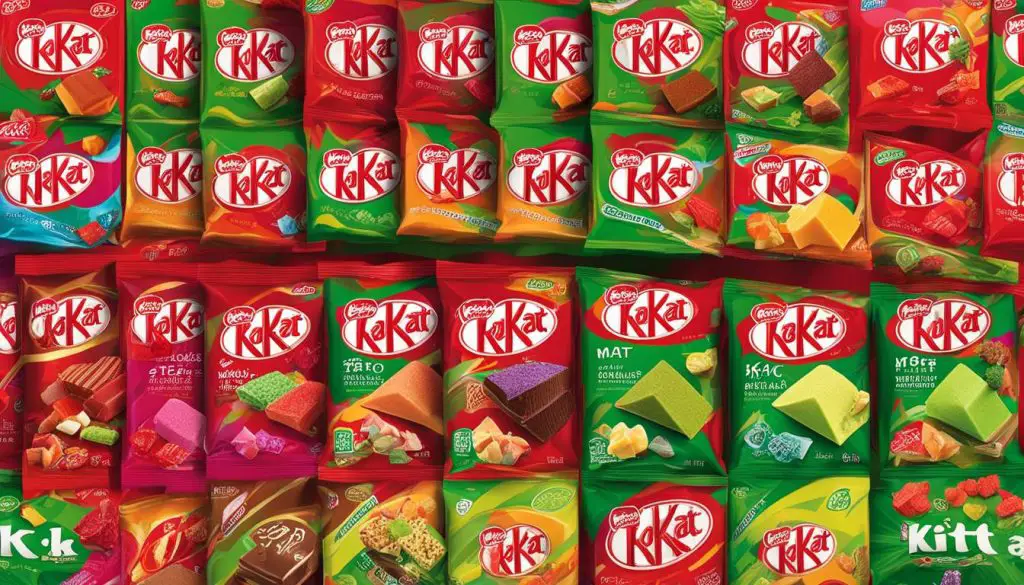
The Uniqueness of Kit Kat Flavors in Japan
| Category | Flavors |
|---|---|
| Traditional | Strawberry, Matcha, Vanilla, Banana |
| Fruit-Inspired | Apple, Grape, Watermelon, Pineapple |
| Regional Specialties | Hokkaido Melon, Kyoto Matcha, Osaka Takoyaki |
| Seasonal | Cherry Blossom, Pumpkin Pudding, Caramel Apple |
| Luxury | Belgian Chocolate, Sea Salt Caramel, Pistachio Raspberry |
Conclusion
In conclusion, the cultural significance and popularity of Kit Kats in Japan cannot be understated. These beloved chocolate treats have become more than just candy; they are symbols of good luck and success, particularly for students preparing for exams. The linguistic connection between “Kit Kat” and “kitto katsu” (which means “you will surely win”) has led to the tradition of giving Kit Kats as good luck charms.
Nestle Japan has embraced this cultural belief, using it as a foundation for successful advertising campaigns that reinforce the association between Kit Kats and good luck. The popularity of Kit Kats in Japan has soared, surpassing even long-standing confectionery brands.
What sets Kit Kats in Japan apart is the incredible variety of flavors. With over 300 unique flavors available, including seasonal, limited-time, and regional specialty options, Kit Kats offer a delightful and exciting experience for candy enthusiasts. The practice of exchanging Kit Kats as omiyage, or food souvenirs, also adds to their cultural significance and appeal. Whether you enjoy the traditional flavors or indulge in the luxury options at the Kit Kat Chocolatory in Tokyo, each bite of a Kit Kat in Japan carries with it the cultural significance and good luck associated with this beloved treat.
FAQ
Do Japanese people believe that Kit Kats bring good luck?
Yes, in Japan, Kit Kats are considered a symbol of good luck, particularly for students studying for exams.
Why do Japanese people eat Kit Kats for good luck?
The word “Kit Kat” sounds similar to the Japanese phrase “kitto katsu,” which means “you will surely win.” This linguistic connection has led to the belief that eating Kit Kats will bring success.
Are Kit Kats given as gifts before exams?
Yes, Japanese parents often gift Kit Kats to their children before exams, telling them that they will surely succeed.
What is omiyage?
Omiyage refers to specially packaged food souvenirs that travelers give to their friends and family. Kit Kats are frequently exchanged as omiyage, allowing people to share unique and representative tastes from specific areas of Japan.
How many flavors of Kit Kats are available in Japan?
Japan boasts over 300 unique Kit Kat flavors, ranging from traditional fruit and dessert-inspired tastes to more adventurous combinations like sakura (cherry blossom), red bean, and soy sauce.
Are there luxury options for Kit Kats in Japan?
Yes, the Kit Kat Chocolatory in Tokyo offers luxury Kit Kat options with premium ingredients and elevated flavors designed for adult tastes.
What is the cultural significance of Kit Kats in Japan?
Kit Kats in Japan have become more than just a candy. They are a symbol of luck, tradition, and regional pride, and are given as gifts for various occasions.
Why are there so many unique flavors of Kit Kats in Japan?
The popularity of Kit Kats in Japan has led to the creation of seasonal, regional, and limited-time flavors. This allows for a diverse and exciting range of taste experiences for consumers.

